What is science communication? How do we effectively talk with each other, and learn?
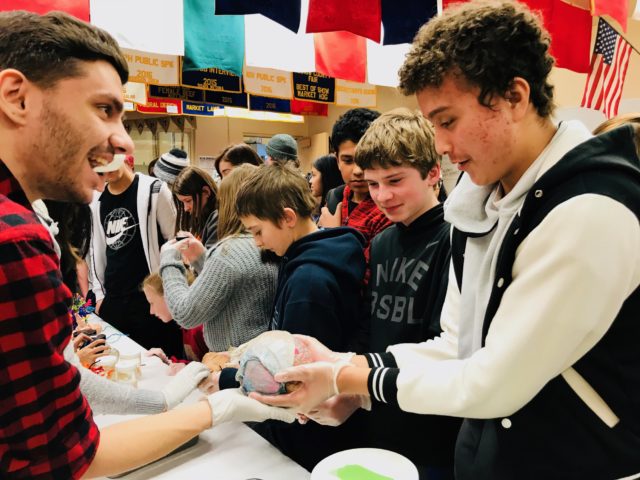
In this season of brain awareness, we know from lived experience, extensive outreach – and brain research – that taking risks, including others, going places where established institutions don’t engage, listening to stories and making art is how we best educate, innovate, create, challenge biases and preconceptions, and share and absorb valuable discoveries about our noggins!
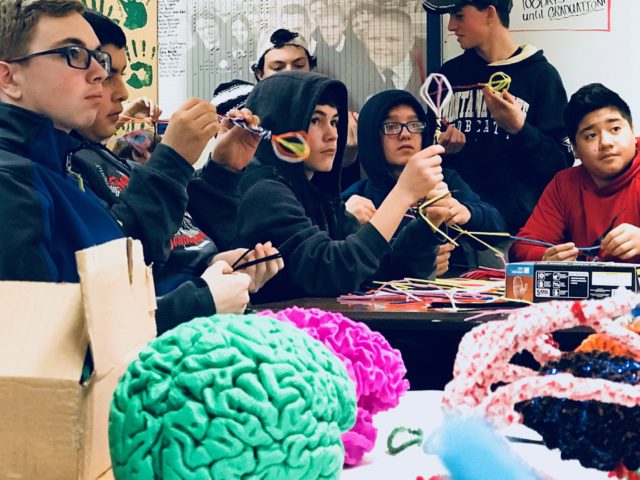
LEARN MORE: NW Noggin – Interview with the Dana Foundation!
LEARN MORE: Beyond stereotypes: Placing the adolescent brain in developmental context
LEARN MORE: Storytelling as an Active Learning Tool to Engage Students
LEARN MORE: Better schools with improv and art
Our service-oriented volunteers, thrilled by these cherished adventures in community engagement, leapt at the chance to leave campus and labs, and plow through a blizzard paralyzing the Portland area towards the high desert of eastern Oregon. We were invited to spend three days at the Fletcher Farm, 300 gorgeous rolling acres of Northwest sulci and gyri-like hills, and speak with ~300 4th – 12th graders in Morrow County public schools!
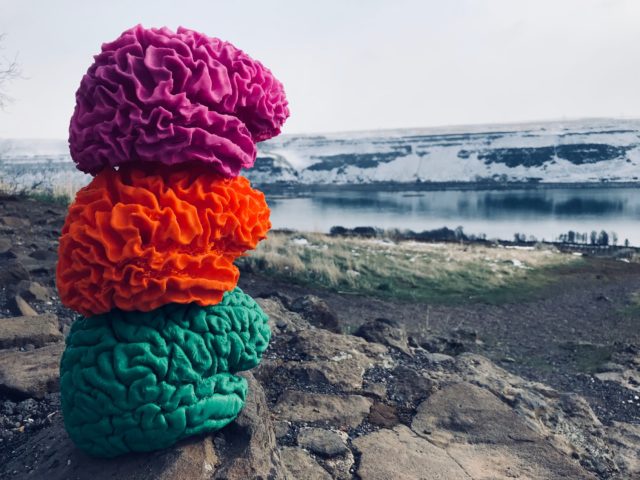
Andrea Fletcher, who was appointed by the Oregon Governor to serve on the Rural Health Coordinating Council, had not only arranged these school visits, but generously offered to house and feed our eager crew of sleeping bag-toting grads and undergrads!

We left Portland State University in snow, ready to update their motto “Let Knowledge Serve the City” to embrace more rural areas of the Pacific Northwest. We’d packed our cars with pails of brains, electrodes and pipe cleaners in the past for similar treks to eastern Davenport and LaGrande…

LEARN MORE: Dopamine in Davenport
LEARN MORE: Blue Mountain Brains!
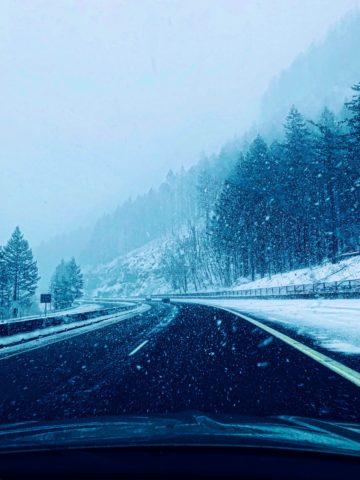

Ice, 2007 by James Lavadour
LEARN MORE: Contemporary North American Indigenous Artists
Frozen roads in the Columbia River Gorge didn’t stop us, and we emerged at The Dalles into relatively clearer skies…
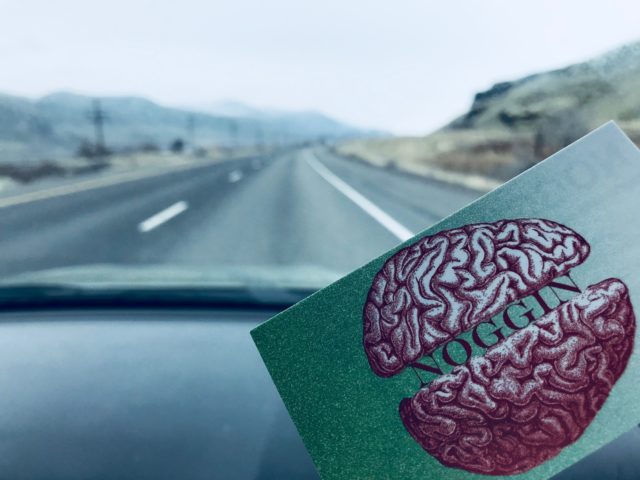
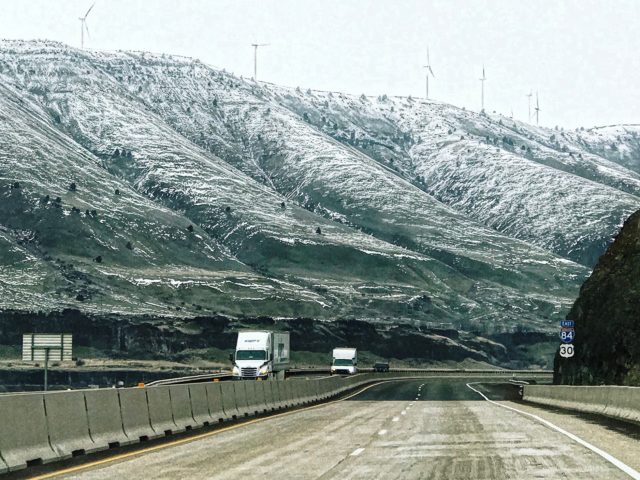
Sulci and gyri in the longitudinal fissure separating Oregon and Washington; windmills poking up like cortical electrodes…
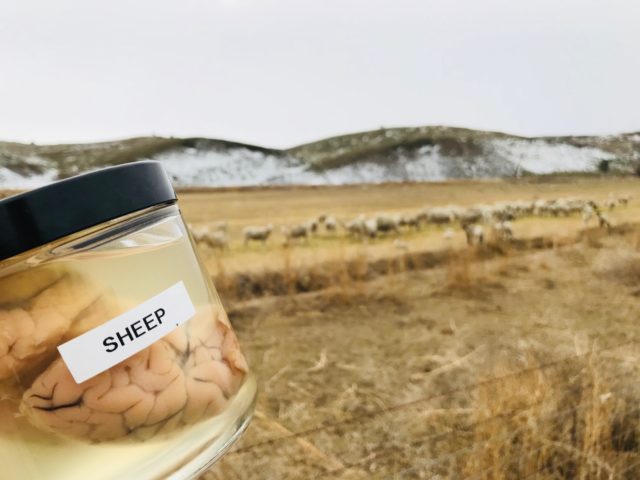
Baaa-rains!
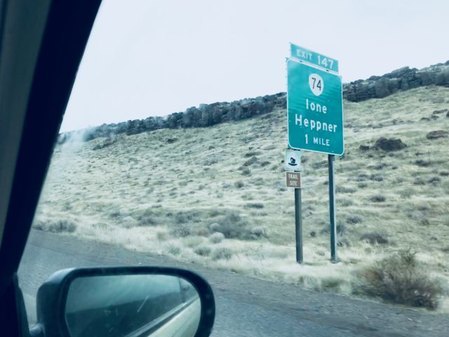
If you want to find my place
get out of town any way you can.
Find the Cascades in early morning…
–George Venn, “Directions for Visitors”
We successfully arrived at the Fletchers in Lexington on Tuesday night, as the snow kept falling…
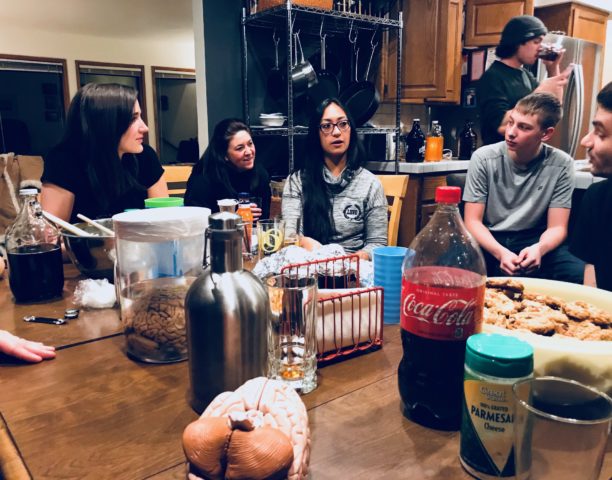
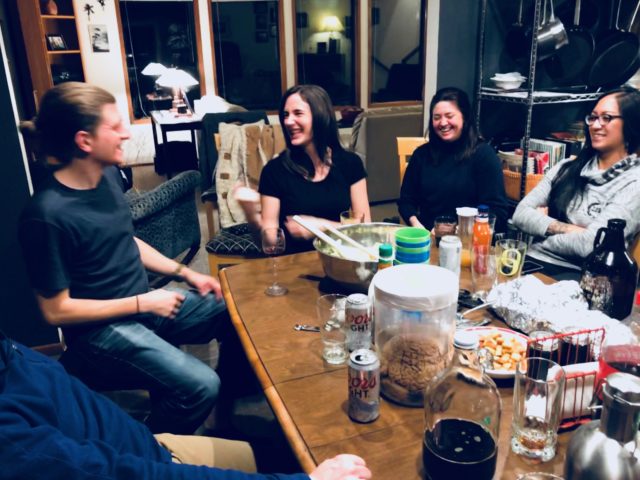
Brains at the dinner table – education happens anywhere…
Our volunteers were Jacob Schoen, a graduate of Portland State University who works at the Oregon National Primate Research Center, Leota Wolford, a PSU grad now studying at the East West College of the Healing Arts, Ashley Keates and Jade Osilla, undergraduates in Psychology at PSU, Sam Carpenter from OHSU and Joey Seuferling, a WSU Vancouver graduate and our NW Noggin Resource Council member for Hospitals and Health Care…
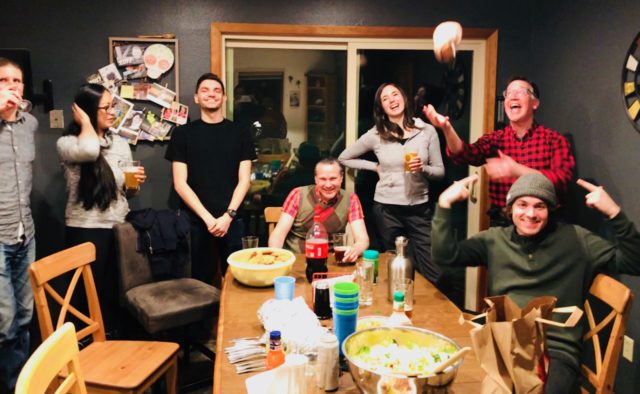
So much snow fell on Tuesday that Heppner Junior & Senior High School opened late on Wednesday morning – a rare occurrence for schools along the Blue Mountain Scenic Byway!
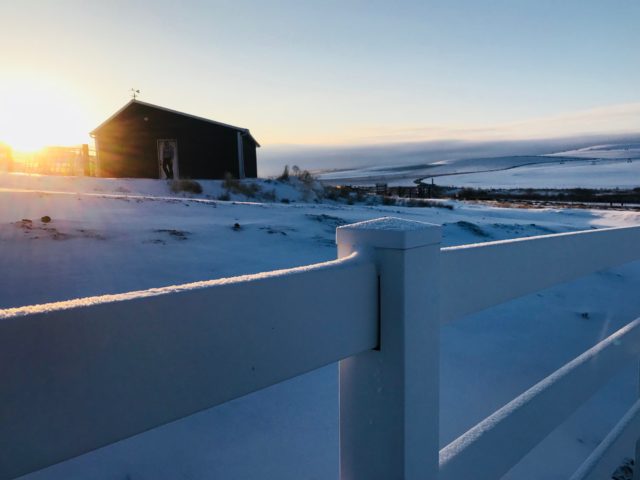
“…older stories live here, give away their ancient secrets, medicines to sing us whole again…” – Bette Lynch Husted
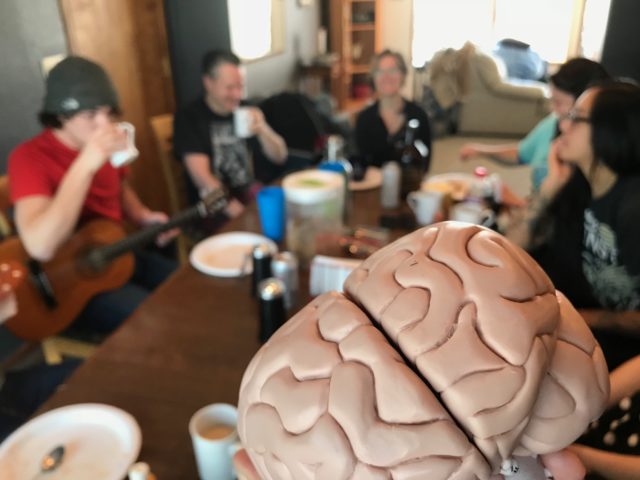
All hail coffee: the performance rewards of adenosine receptor blockade! We crawled carefully along slick roads towards Heppner, and gunned it up Spruce Lane to school…
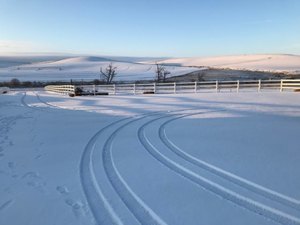
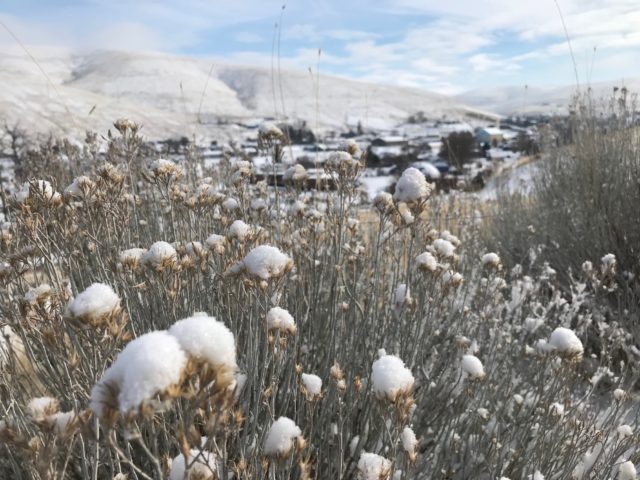
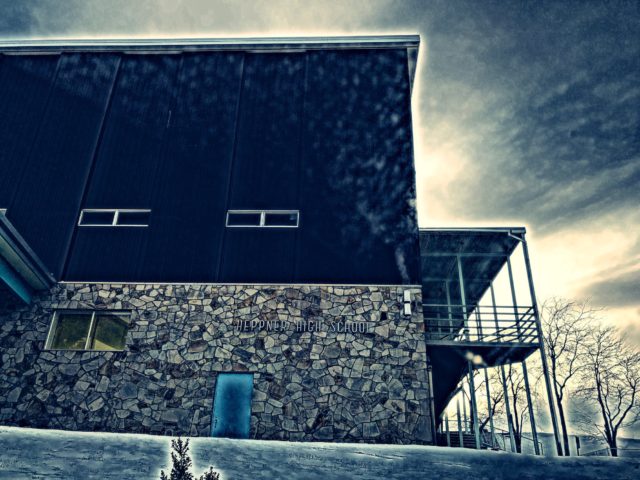
It was well below freezing outdoors, but Jason Palmer, the science teacher, welcomed us warmly to his classroom as the students streamed in!
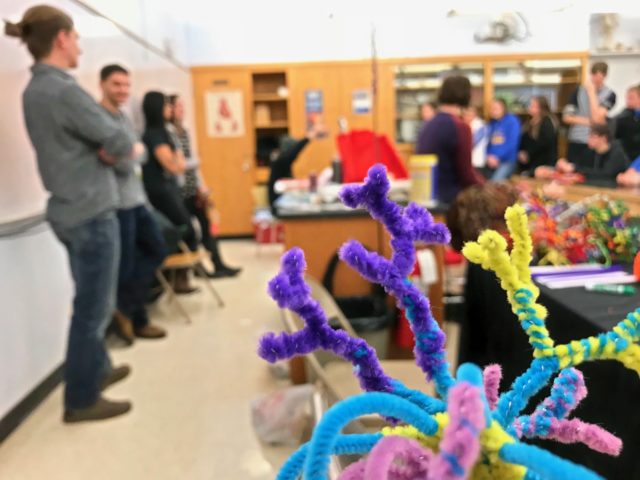
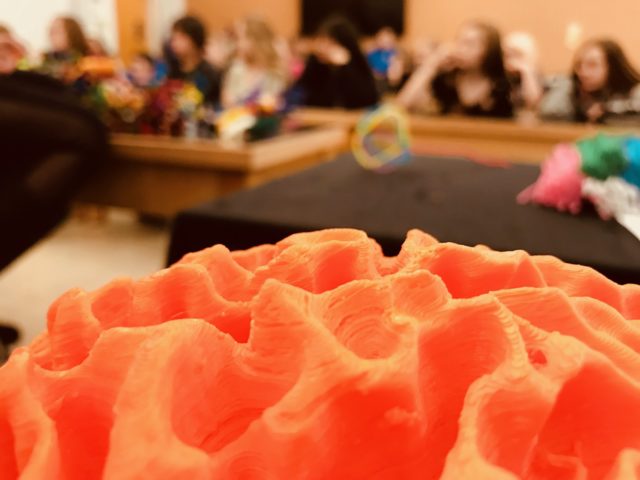
We introduced ourselves and took questions. “What is muscle memory? What happens to your brain when you get a concussion? How does puberty change the brain? Do men have different brains than women? Where did you get those brains!”
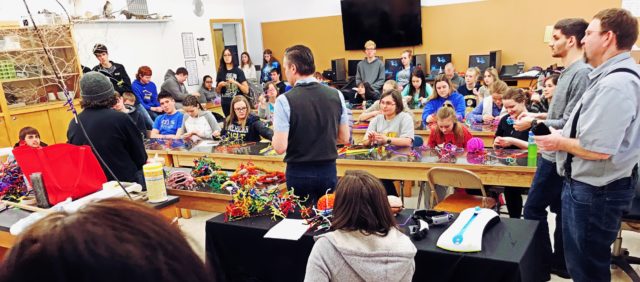
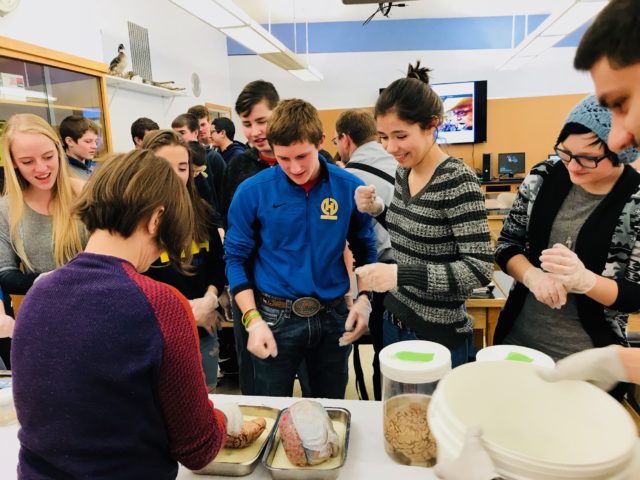
From PSU undergrad Jade Osilla: “One young lady asked if we can develop two different hobbies at the same time; if we practiced them on the same day, would we make progress on both? I said yes, and there is research suggesting that taking naps after practice might help you retain skills for those hobbies. She said she had heard something similar; that a 10-15 minute nap before doing homework can get you a better score. Young people naturally experiment: ‘So I tried it. I took a nap before doing homework…and I did better!'”
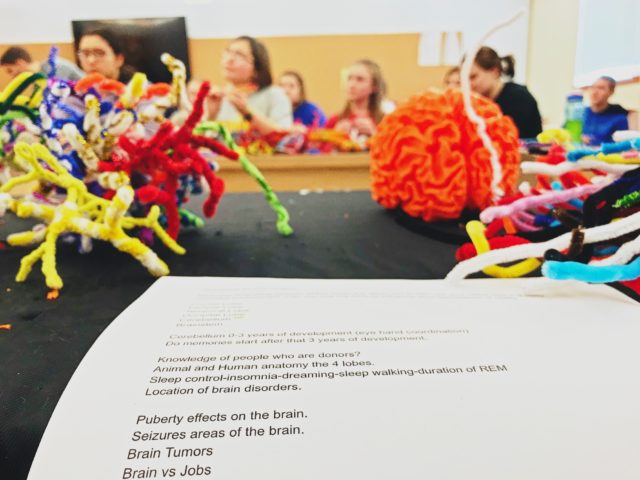
LEARN MORE: Sleep Improves Memory
LEARN MORE: About Sleep’s Role in Memory
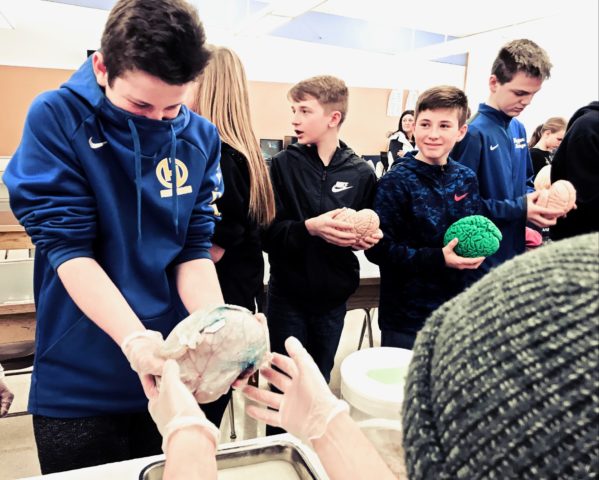
Sleep-related questions are common. Teenagers experience dramatic shifts in their circadian cycles as a normal part of development, staying up late and sleeping late, and requiring a minimum of 8-9 hours of sleep each night. Schools that open after 8:30am, as Heppner did this morning, offer young people enough shuteye to successfully learn, remember, and develop healthier brains…
LEARN MORE: Adolescent Changes in the Homeostatic and Circadian Regulation of Sleep
LEARN MORE: Sleep habits, academic performance, and the adolescent brain structure
LEARN MORE: School Start Times, Sleep, Behavioral, Health, and Academic Outcomes
LEARN MORE: Noggins in Nod
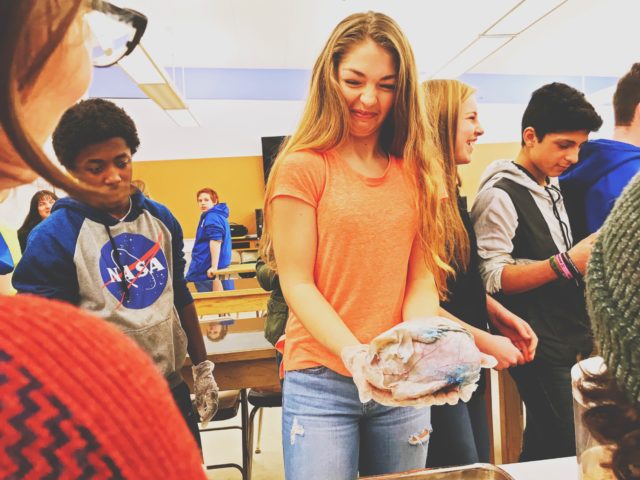
From Jade: “I was asked often why I was pursuing a degree in psychology, when I already had a degree in geology. Many hard sciences I learned in geology apply to psychology: the biochemistry of neurotransmitters, how math and physics help explain the action potential moving down an axon. Additionally, our environment influences the way we think and how we develop. Someone who lives by Oregon’s Blue Mountains has a higher chance of skiing or snowboarding, while someone living next to the California ocean has more likely surfed. We develop individual skill sets, and our brains respond in turn. Geology speaks to how these mountains and oceans came to be and is, in some ways, responsible for the way communities – and brains – have developed.”
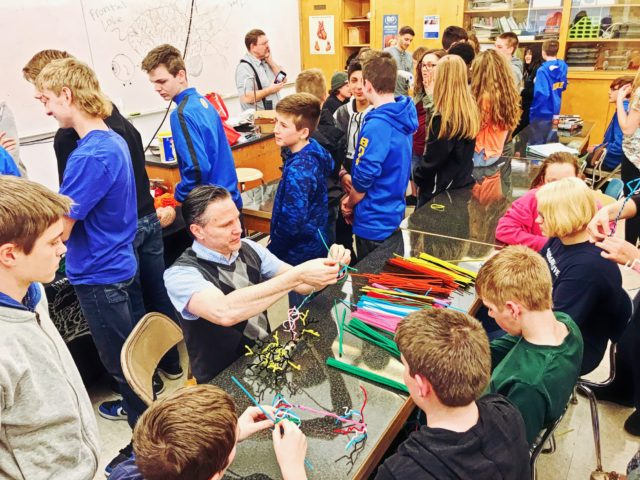
We definitely noticed more farm and agricultural based references for making sense of brain structure and function. “It looks like a seed!” exclaimed one student, while considering her pipe cleaner cell body. “It’s like a garlic bulb.” “When I push out three dendrites, it’s a chicken foot!”
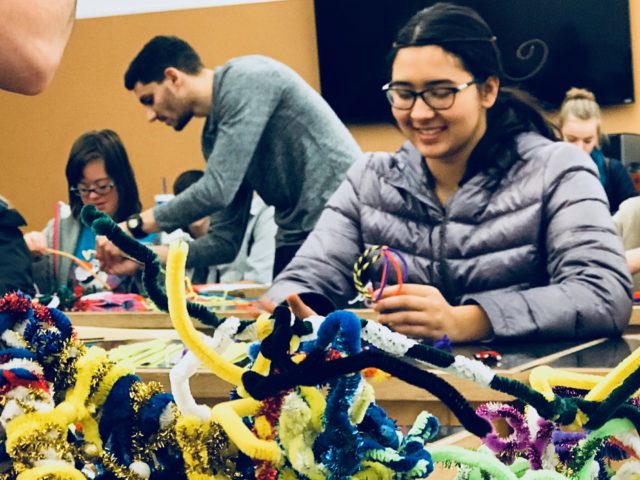
Our classrooms offered opportunities for more questions from 7th through 12th graders, the chance to learn about brain cell structure while crafting our own, brain games and hands on neuroanatomy with 3D printed cerebrums donated by the Portland 3D Printing Lab – and the real deal!

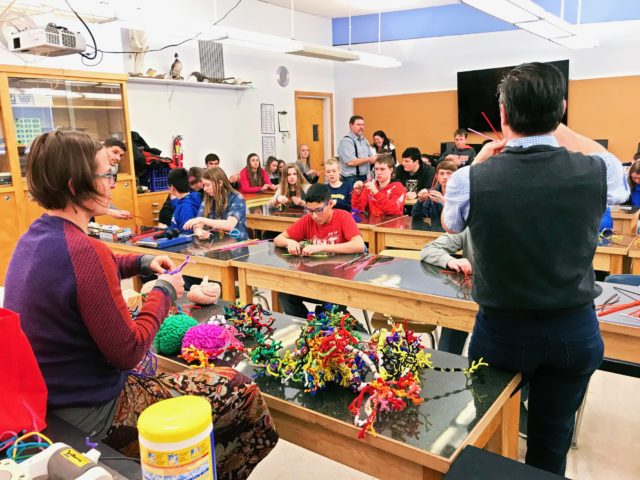
LEARN MORE: STEAM Art Projects (including How to Make a Pipe Cleaner Neuron)
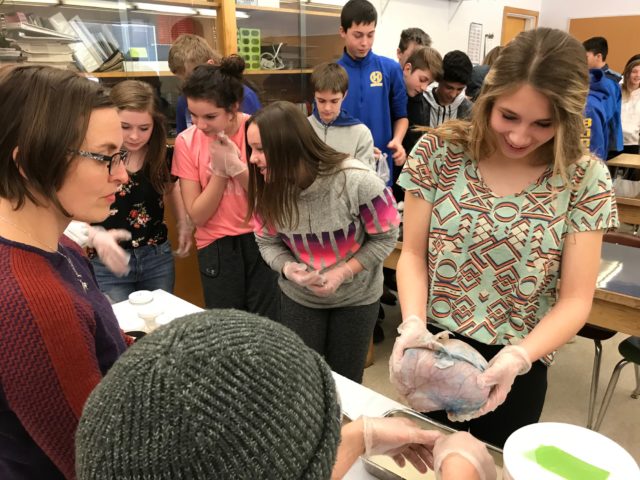
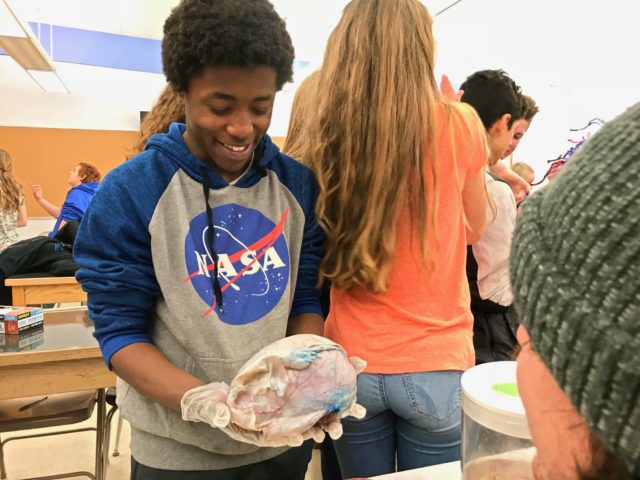
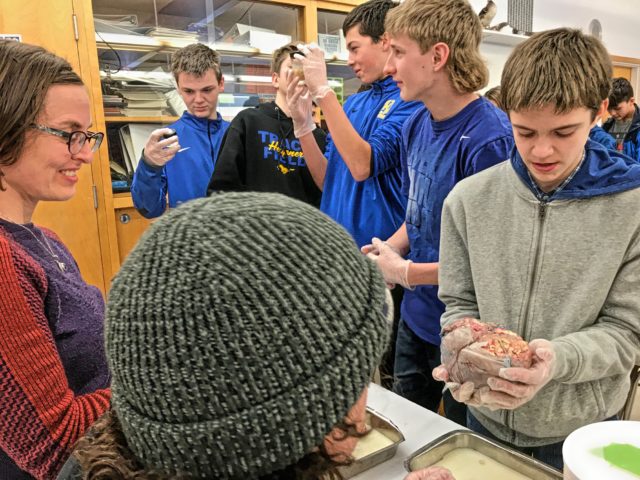
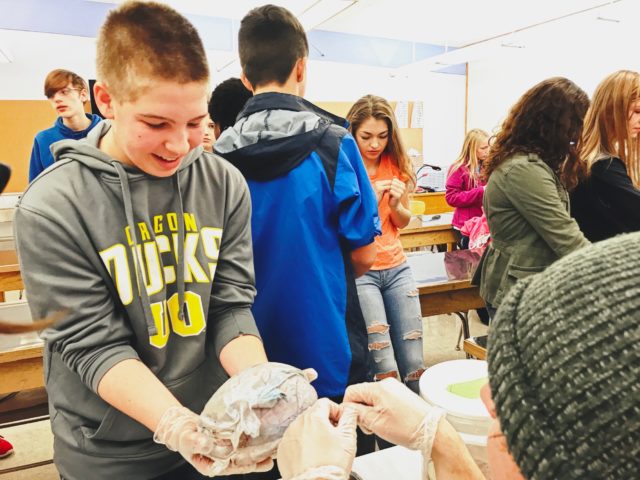
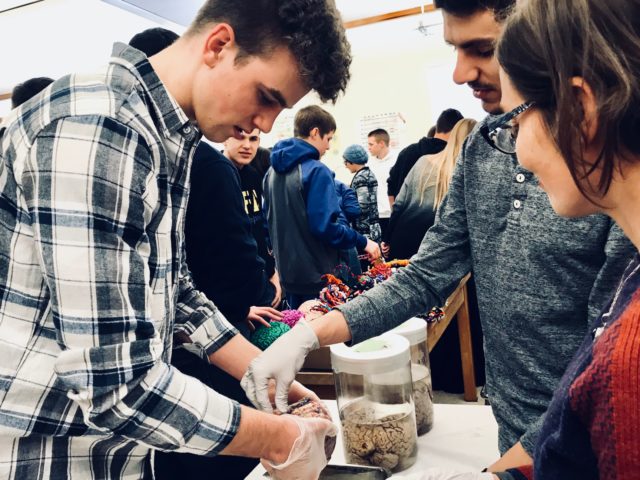

“Can monkeys trained to use vape pens blow smoke tricks? Why is there such a variety of potential consequences from head injuries?”
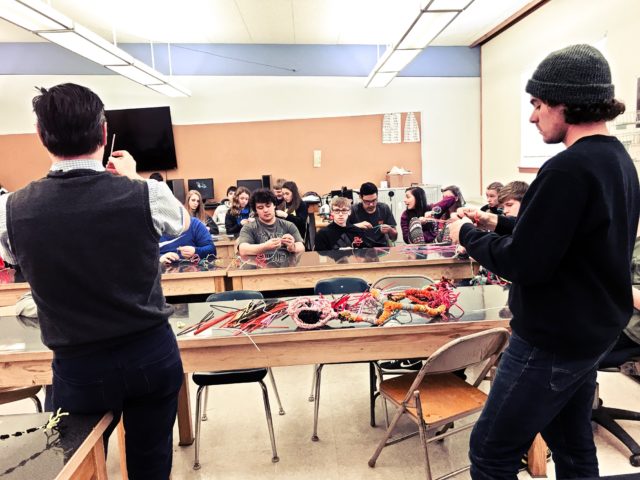
A popular activity was the Mindflex Duel, a game that demonstrates the electrical nature of information flow in the brain. Each player attached a single electrode over their left frontal lobe, with another reference snapped onto an ear. The ear presumably has no brain activity, so in this way any non-neural “noise” from that electrode could be subtracted out…
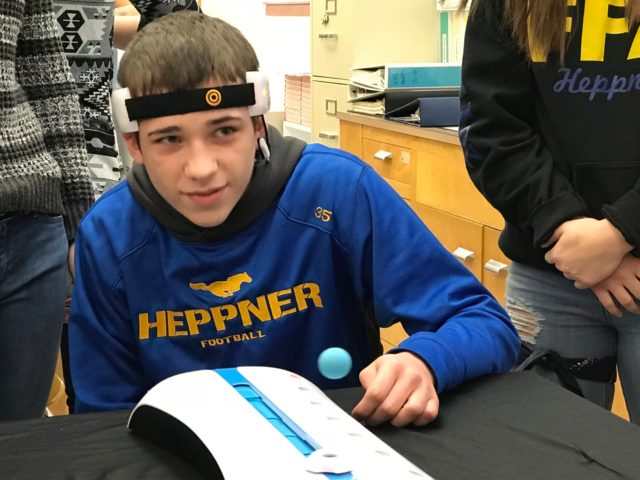
This crude EEG information, which can change with changes in brain activity, was wirelessly transmitted to the game’s base station, which converts the message into movement of a hovering, air driven ball along a blue striped track…
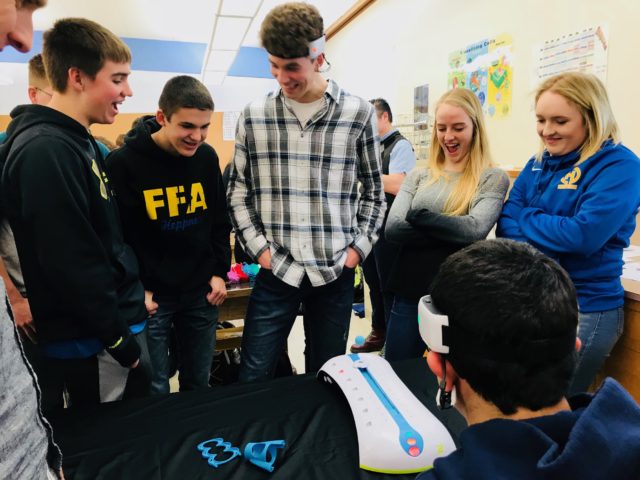
LEARN MORE: Neuroscientists test an early version of the Mindflex…
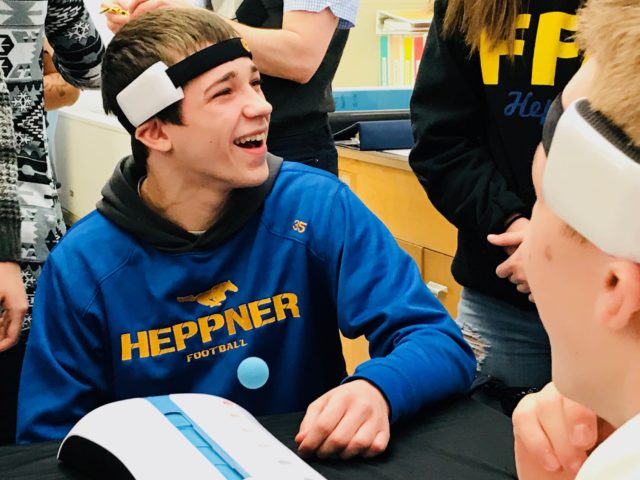
Students were curious about opportunities for further study, and we explained how basic science research is currently funded at the graduate school level through the National Institutes of Health. However, we noted, NIH support depends on Congress. “Which specific areas of research do you think get the money?” we asked. “Drugs!” “Old people diseases, like dementia?” “Mental health disorders, like autism?” “ADHD?” “But not gun violence, right?”
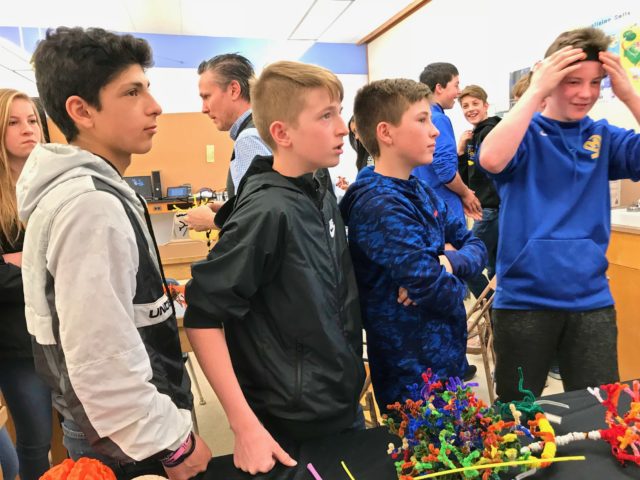
Lots of sharp brains in Heppner!
Research evidence is not the only factor determining public policy, and students knew how money could drive harmful political decisions over more relevant facts, including at the NIH. Congress, for example, approved the Dickey amendment to an appropriations bill in 1996, which stated that “none of the funds made available for injury prevention and control at the Centers for Disease Control and Prevention may be used to advocate or promote gun control.”
LEARN MORE: Funding and Publication of Research on Gun Violence and Other Leading Causes of Death
LEARN MORE: Why Can’t the U.S. Treat Gun Violence as a Public-Health Problem?
The inspiring young people at Florida’s Marjory Stoneman Douglas High School, who are eloquently (and successfully) pointing out the link between our absent gun laws and horrific, repeated incidents of gun violence, were definitely on our minds, and are acting in hopeful contrast to the many resigned, perseverating adults who refuse to change policy, responding instead with more of their devastatingly ineffective thoughts and prayers…
LEARN MORE: Saving lives by regulating guns: Evidence for policy
LEARN MORE: Funding and Publication of Research on Gun Violence and Other Leading Causes of Death
LEARN MORE: NIH institute directors stand firm on not renewing focused firearm research program
LEARN MORE: Thoughts and Prayers and NRA Funding
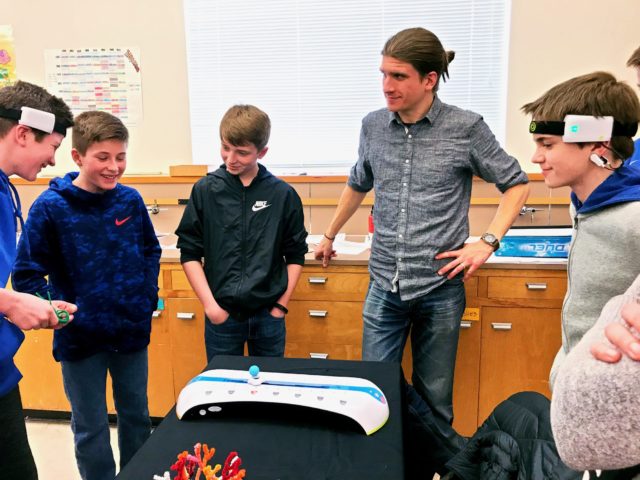
After an energetic day of brains, games, insightful questions and art – we got baby goats! Andrea Nelson, the Art/Language Arts/Social Studies/Daily Living teacher invited us into her classroom to cuddle with some adorable new Heppner residents..!
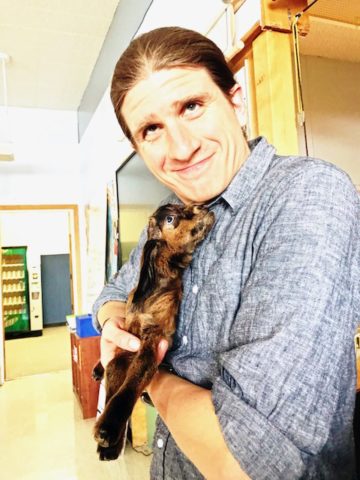
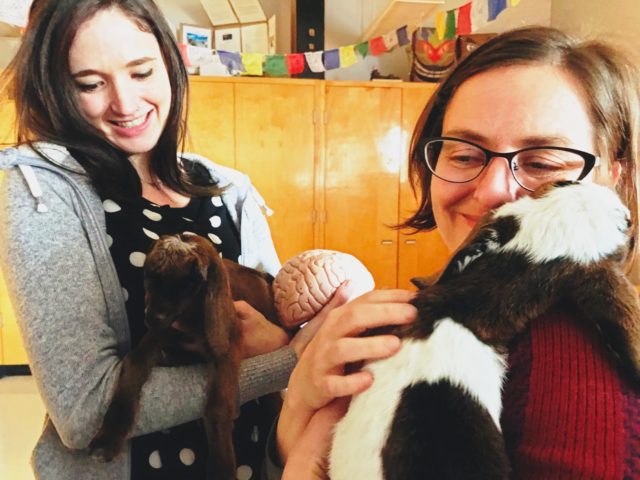
We are also indebted to Beth Dickerson, the Future Farmers of America Advisor, for feeding our volunteers with delicious Morrow County (and perhaps a few Umatilla County) potatoes!
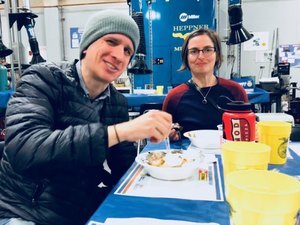
LEARN MORE: Potatoes baked just right
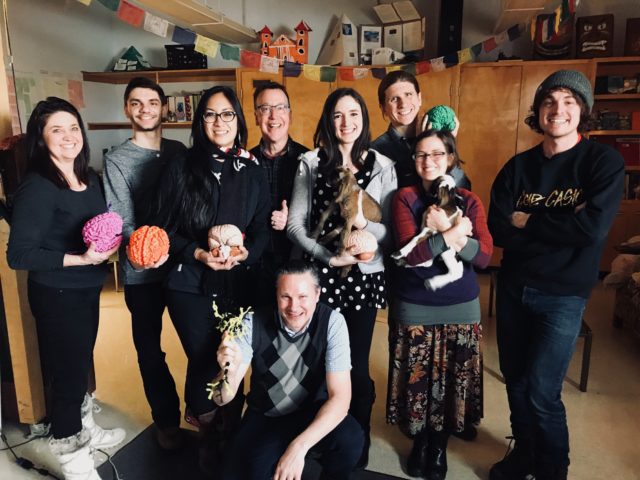
Brains, art, local potatoes and baby goats – we wanted to stay
After school, we enjoyed exploring Heppner, the Gateway to the Blue Mountains!
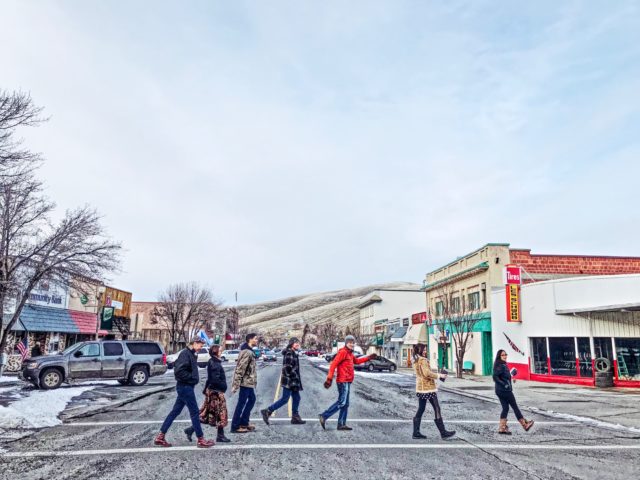
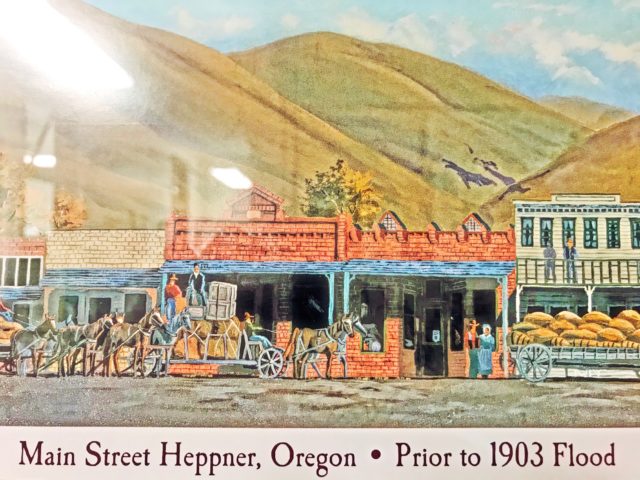
LEARN MORE: Heppner flood of 1903
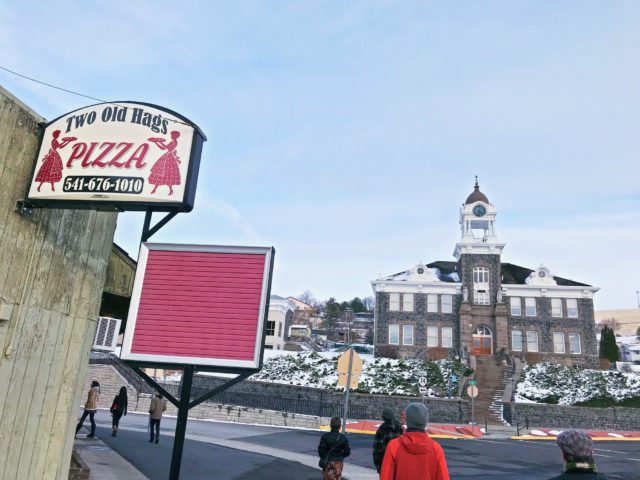
We toured the historic Morrow Country Courthouse, with its beautifully restored clocktower. Expert clockmaker Gary Kopperud, who teaches clockworks at the Eastern Oregon Correctional Institute, led the restoration, and donated his work. We enjoyed watching the intricate time keeping mechanism repaired and maintained by Gary and his students deliver some impressive chimes at 5:00pm…
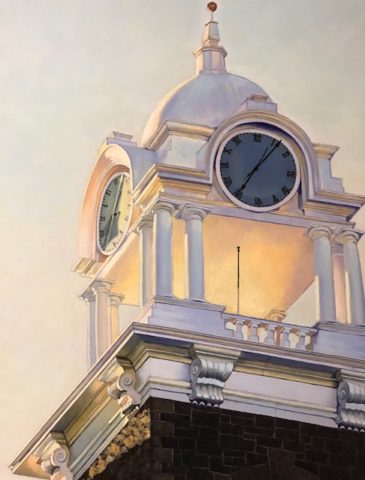
LEARN MORE: Tower restoration nearly finished
LEARN MORE: Morrow County Courthouse Clock Tower Restoration Complete
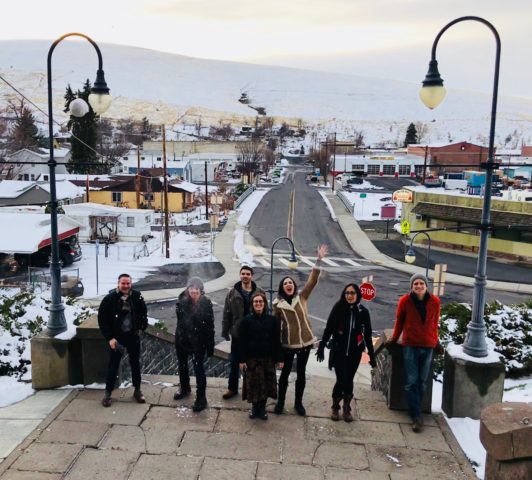
We returned to Lexington for burgers, potato salad, home-baked cookies, delicious brews from Vancouver’s Doomsday Brewery contributed by outreach volunteer (and Doomsday bartender) Ashley Keates – and wonderful conversation with the Fletchers and their friends!
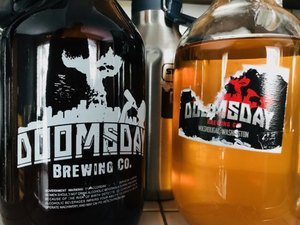
The next morning we woke early! Ione School had no delay, and we were expected at 7:30am…

LEARN MORE: Coffee Drinkers Have Lower Risk of Death
Fresh snow blanketed the driveway, as we packed up brains and said goodbye to Andrea…
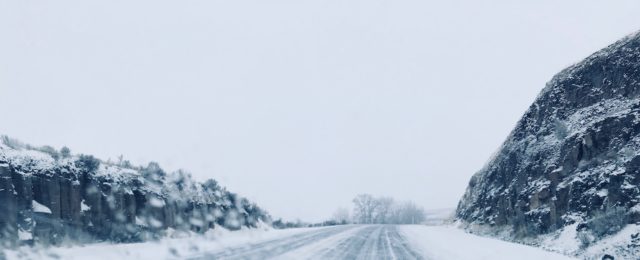
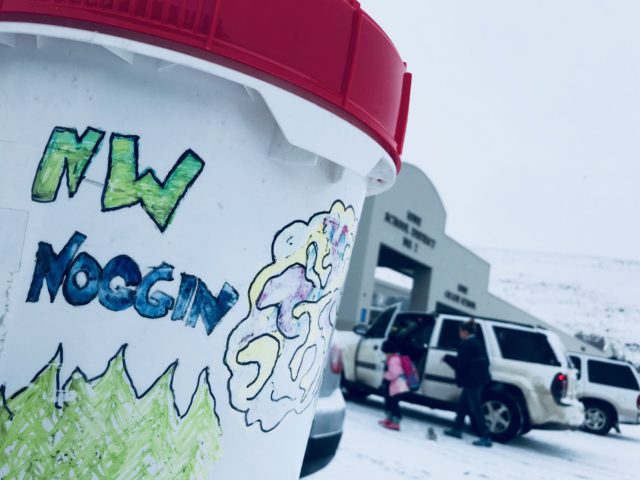
Baby animals are a thing here! We were met by Brandi Orem, the Kindergarten teacher, and Agriculture Science teacher Erin Heideman – along with a quacking, splashing trough of baby ducks!

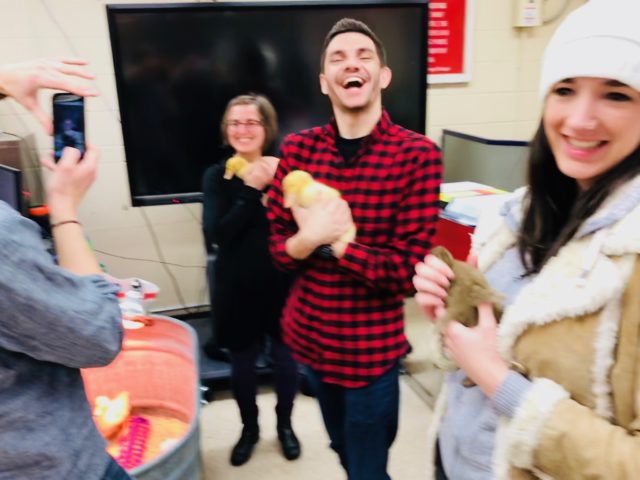
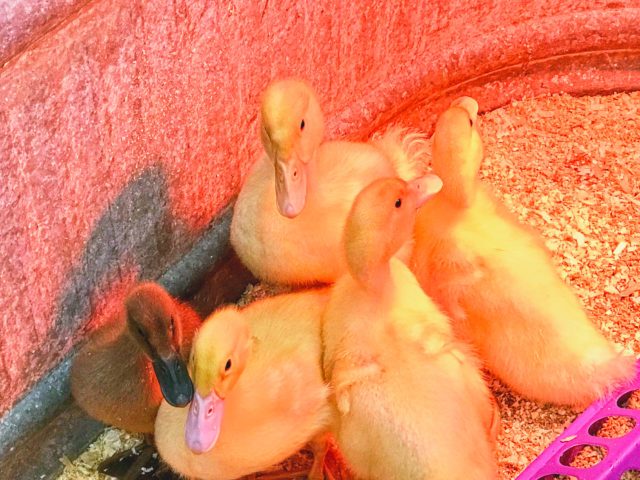
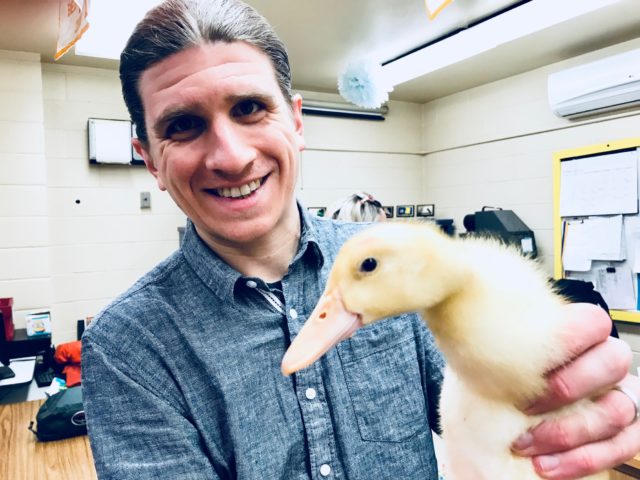
LEARN MORE: Pet Face: Mechanisms Underlying Human-Animal Relationships
LEARN MORE: Baby schema in human and animal faces induces cuteness perception and gaze allocation in children

Ione is a small school, and we spent the morning (7:30 – 12:30) with every 4th through 12th grader – about 80 students in all. We also tried an approach we used at Heppner, and have been discovering has great benefits for classroom engagement; that is, beginning with art project instructions, and letting students continue working with their hands while we take questions about their brains…
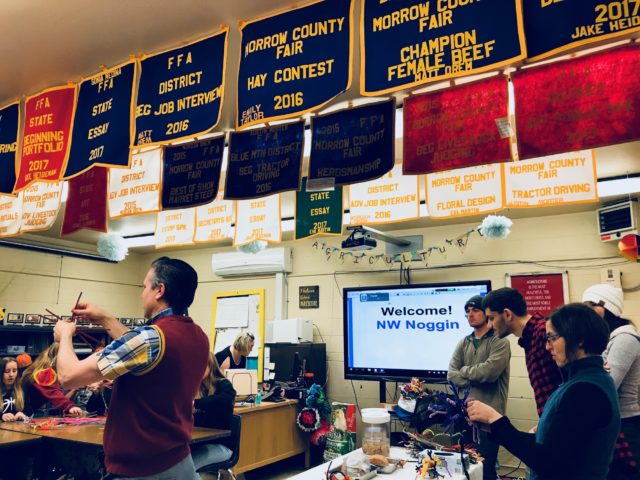
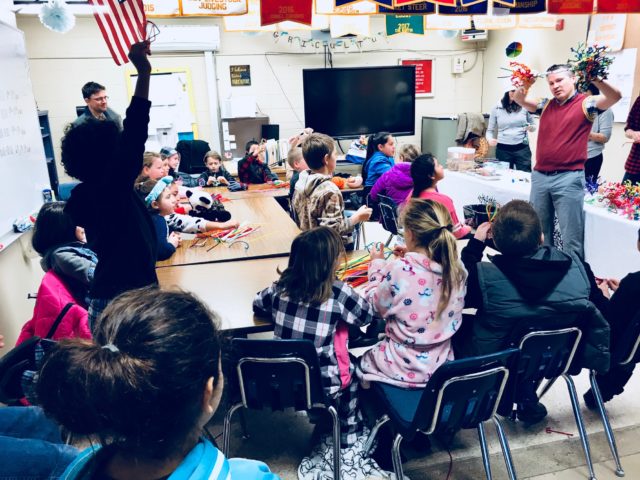
Something about using your hands, and working on a project, seems to calm many students and help them attend better in the classroom. We asked students what they thought, and many agreed that having something to work on physically, and repetitively, like the crafting of pipe cleaner neurons, that was both permitted and interesting, made it easier to focus on and listen to their teacher…
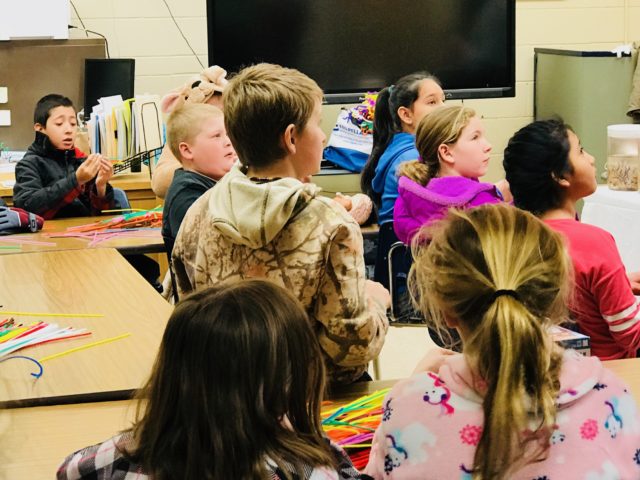
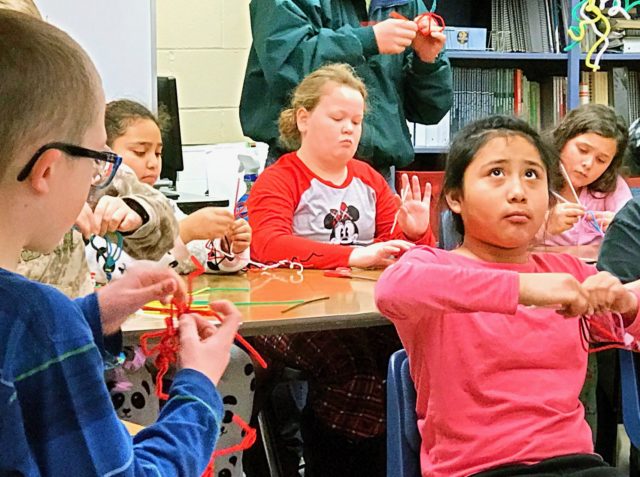
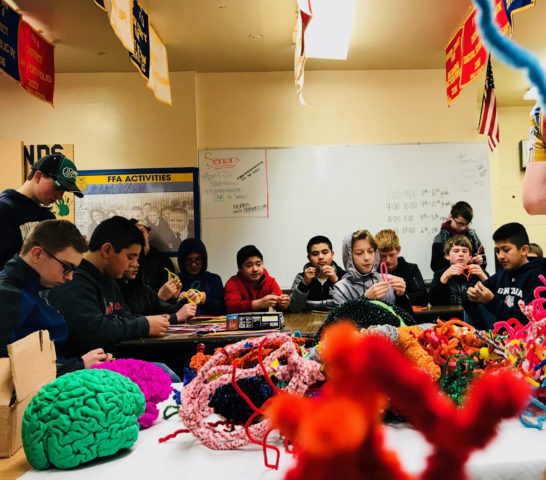
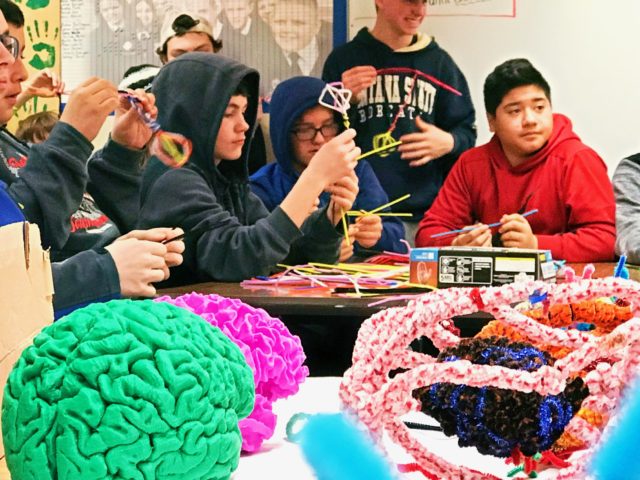
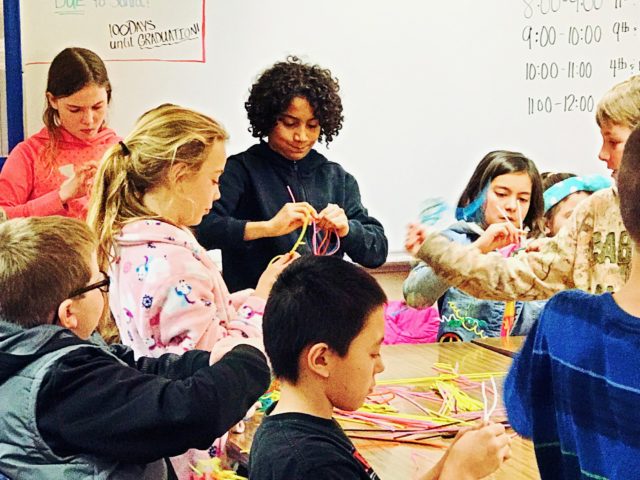
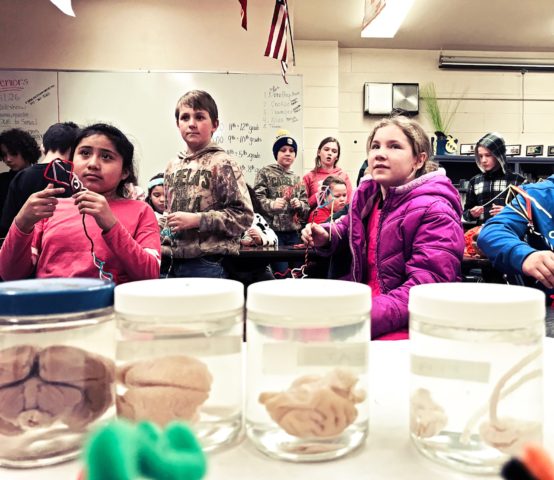
LEARN MORE: The Arts in Early Childhood (NEA)
Many great questions during a busy morning of neuroscience and art!
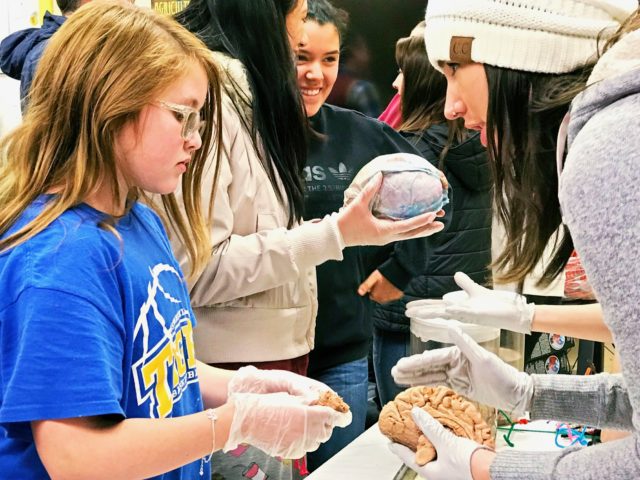

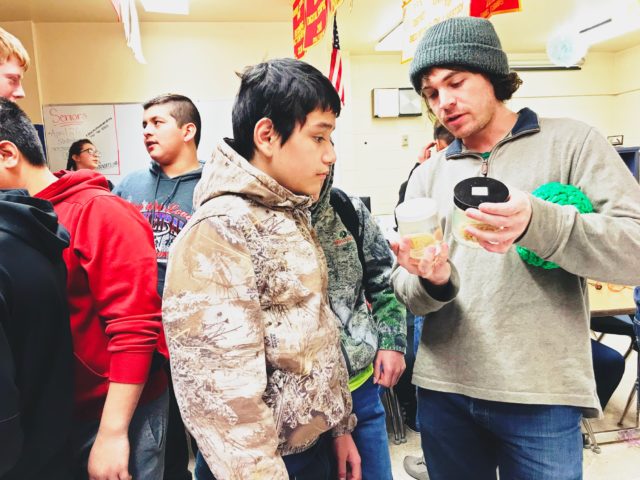
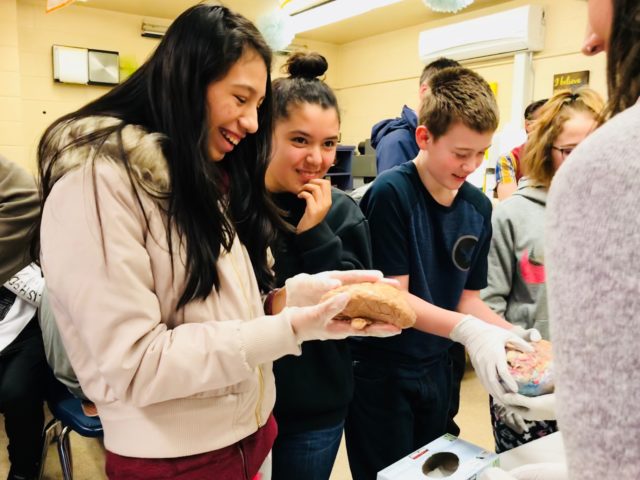
“Log sawing is postponed til tomorrow because we’re having so much fun with the brains”

From Joey Seuferling: “My main takeaway from the trip is this. In a way I felt humbled and it became clear to me what made this event so special; the people. Our host family, fellow volunteers, my professors, the teachers, and students who we taught! Without the distractions that come from a big city the most important part of life becomes so evident. In a small town the bonds between each person are so strong. I felt that during this trip!”
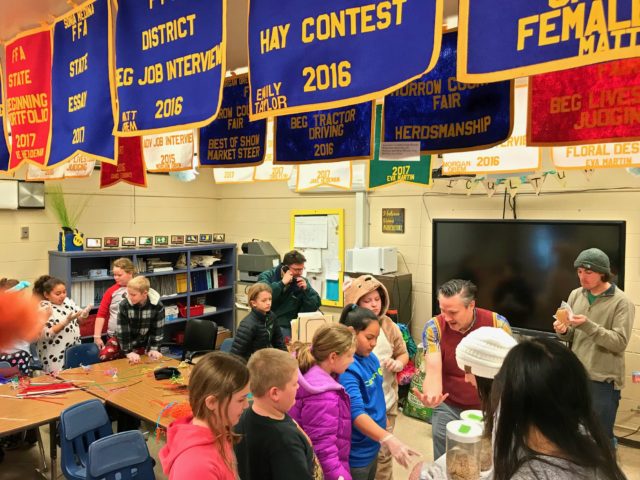

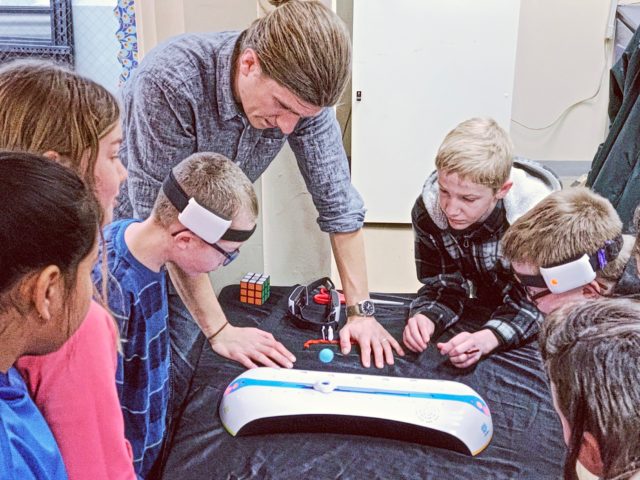
From Sam Carpenter at OHSU: “I introduced myself as a research assistant studying the developing human brain. I have worked on studies looking at how the brain changes in early life, childhood through adolescence. It wasn’t until we interacted with an energetic group of 4th and 5th graders that I made a realization. Up until that class, we had mostly been interacting with high schoolers. They expressed interest for sure, but were more measured and reserved. They asked questions with a sense of discernment, knowing that the content of their question could be observed and judged by others in the room.”
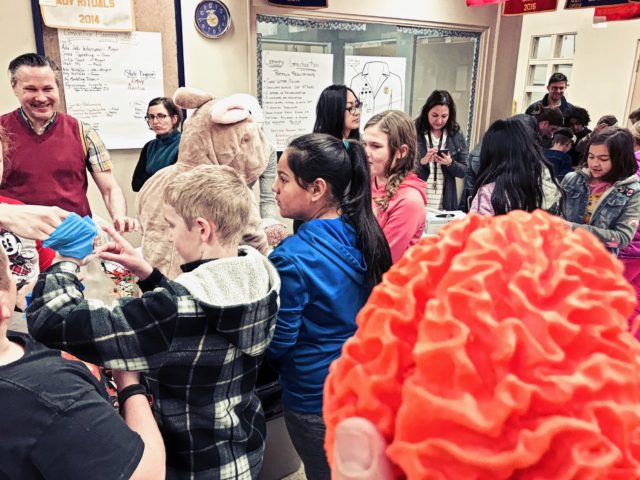
“The younger class, on the other hand, would punctuate our presentation with agreeing statements about themselves that adults would censor out. Behavior that could be seen as disruptive was fuel for our creative fire. We were thrilled at their enthusiasm and juiced their participation for all it was worth. On the flip side, their interjections were, at times, socially inappropriate but were almost always comedically brilliant. For example, we explained that ‘these branches are called dendrites…’ ‘That’s my mom’s name!’ blurted out a student. ‘No – wait – her name is Dawn…’ My realization was how our own observations and judgements of our children also has an effect on how they express themselves.”
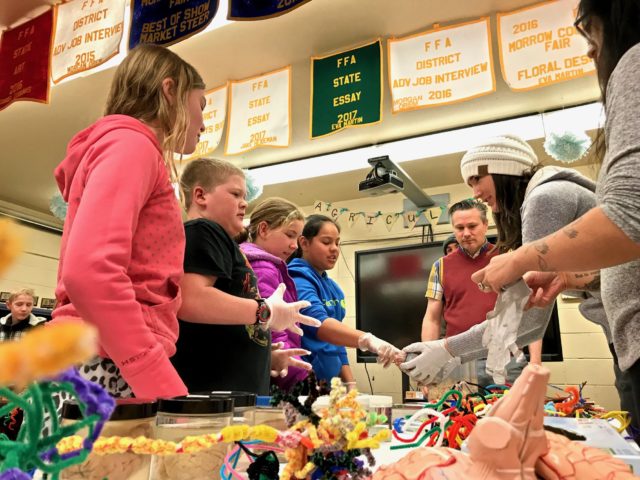

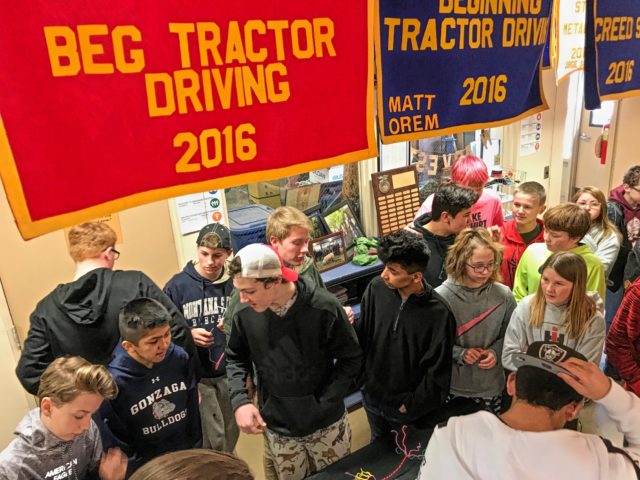
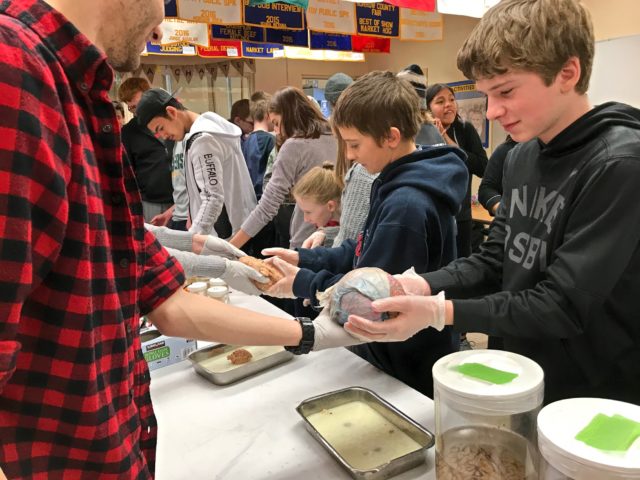
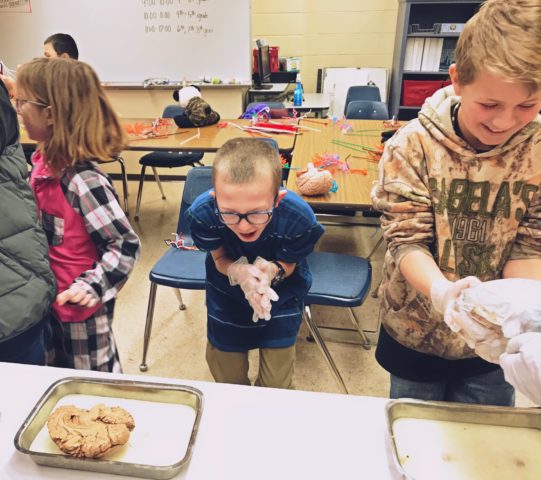
We are indebted to the Ione Market, which prepared mouth watering sandwiches packed (for some of us!) with delicious horseradish and jalapeños. Students told us that Ione was the daughter of a Native tribal leader, and she loved cardinals – the mascot for their school. The food and stories and our memories of this experience kept us going for the gorgeous ride home…
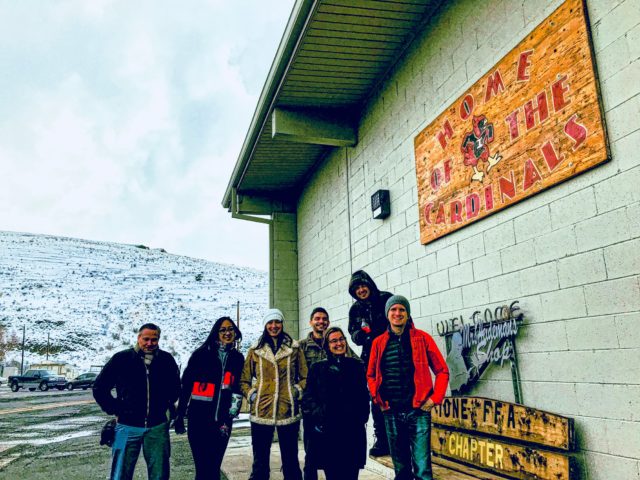
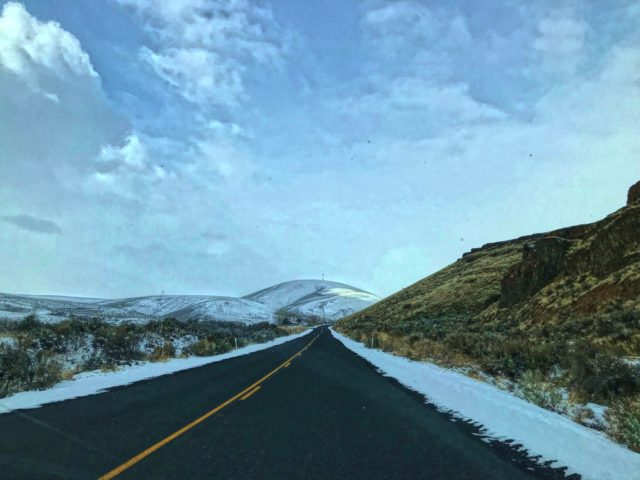
From Joey: “The region of Morrow County has a special magic to it, I quickly found that a big city was not needed for making incredible memories such as those created with everyone at the Fletcher home, Heppner, and Ione. This adventure reminded me again the importance of spending time with others; that it’s the people who matter most. Those around us sharing their personalities, their dreams, and what gives them meaning; our experiences formed by such unique neural pathways and connections in the brain. All of the sensations I felt from this trip have created a memorable experience for me. The cold snowy roads, warmth and friendliness of our hosts and their home, sleeping bags, time shared with each other simply talking, farm animals, hard working and enthusiastic students, shocked faces holding human brains, music, and finally… the drive home. I would easily become nostalgic over this trip I thought as I drove onto 84 after the first 30 miles on my way back home.”
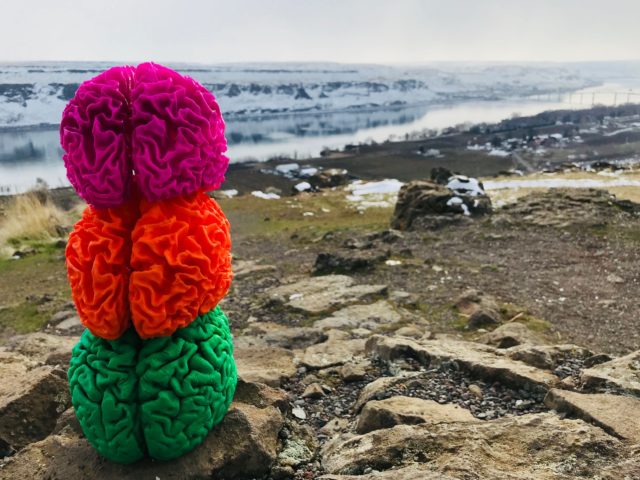
Some folks “talk” about science communication, while others do it. A huge thanks to the dedication and service of our remarkable volunteers, who hail from multiple campuses, and are always thrilled to contribute their time, effort, and enthusiasm to public brain education.
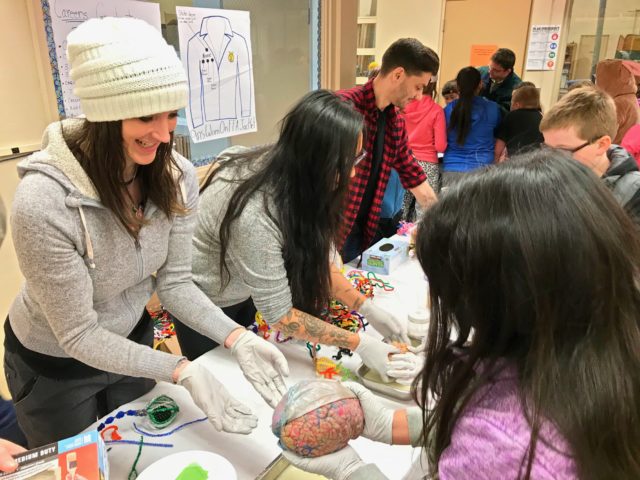
From Andrea: “Thank you all for so selflessly traveling on less than ideal roads in the middle of winter and sharing your time, knowledge and talent with Morrow County kids! I have heard with great pride enthusiastic comments from students and staff and I can’t tell you how important it is for people like you to introduce new information, concepts and opportunities ‘on the road.’ As wonderfully supportive and giving as our community is, there are many students who don’t have the opportunity to travel, explore new ideas or meet people who may think a bit differently, more broadly, or look or behave a bit differently (all in a good way!) than they are accustomed. It truly is wonderful that you are so giving and the work you do has such an impact on a younger generation! It was a pleasure having you all visit our home and we enjoyed very much being acquainted with new friends! We hope you look back fondly at your experience as much as we did. Please feel free to call anytime you are in the area! We are old-fashioned and still in the white pages 
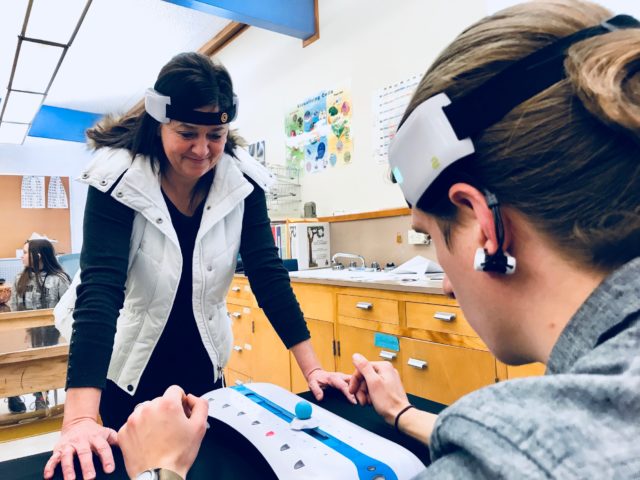
And a HUGE thanks to the teachers and staff at Heppner and Ione, and to Andrea, Andy, Cody and Casey for welcoming us into their beautiful home!




